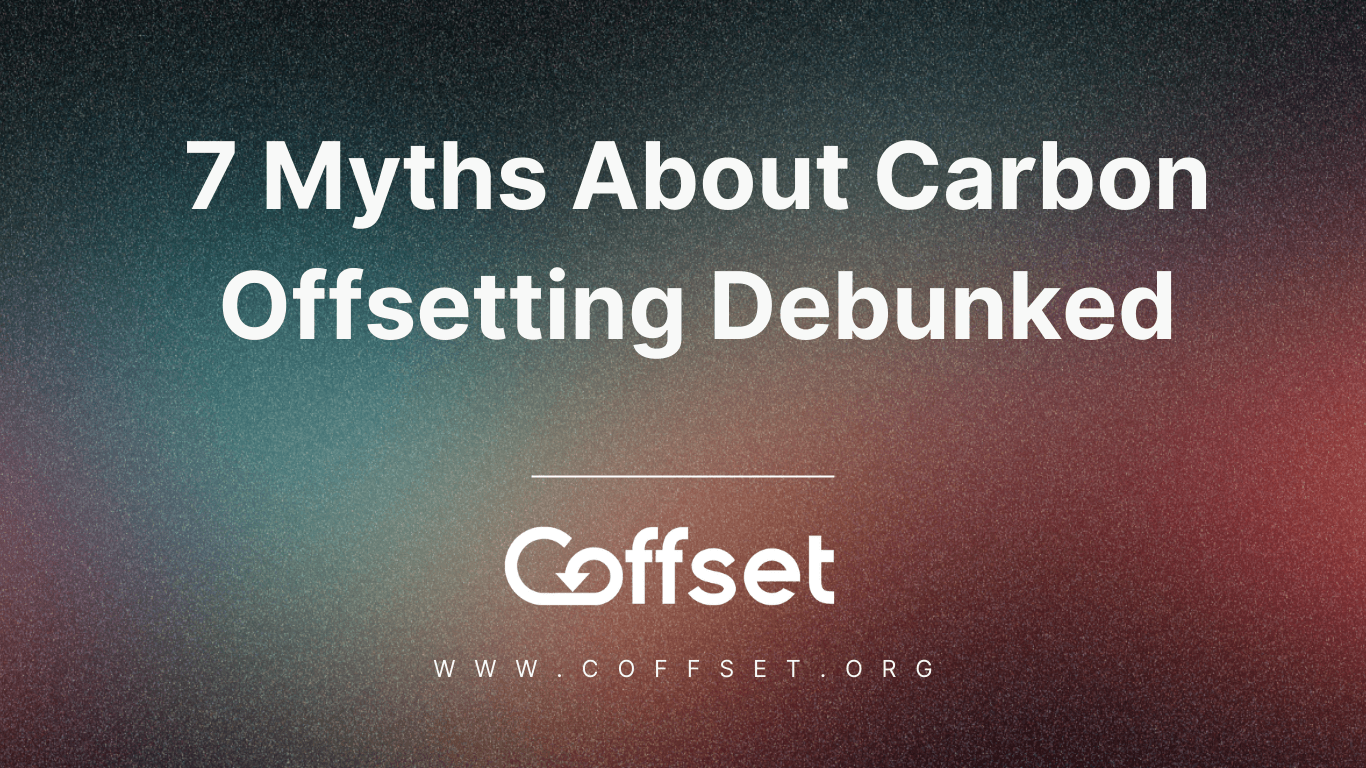7 Myths About Carbon Offsetting Debunked: The Truth Behind the Numbers

Carbon offsetting is often misunderstood and surrounded by myths, despite its growing importance in combating climate change. Critics question its effectiveness, labeling it as greenwashing or a shortcut that avoids real emission reductions. However, when implemented responsibly, carbon offsetting can drive meaningful climate action while supporting sustainability projects worldwide. In this article, we’ll debunk seven common myths about carbon offsetting, using strong evidence and real-world examples to uncover the truth.
What Is Carbon Offsetting?
Carbon offsetting involves compensating for greenhouse gas emissions by funding projects that reduce or remove an equivalent amount of carbon dioxide (CO₂) from the atmosphere. These projects range from reforestation and renewable energy initiatives to advanced carbon capture technologies. While offsetting is not a silver bullet for climate change, it plays a critical role in addressing emissions that are difficult to eliminate immediately.
Despite its benefits, misconceptions about carbon offsetting persist. Let’s tackle these myths head-on and explore why offsetting remains a vital tool in the global fight against climate change.

Myth 1: Carbon Offsetting Is Just a Way to Buy Indulgence
The Claim:
Critics argue that carbon offsetting allows individuals and companies to continue polluting without making meaningful changes, treating it as a “license to pollute.”
The Reality:
Carbon offsetting is not designed to replace emission reductions—it’s meant to complement them. Responsible organizations prioritize reducing their carbon footprint first and use offsets for unavoidable emissions. For example, companies like Microsoft and Google have integrated offsets into their broader sustainability strategies while actively reducing emissions across their operations.
According to research by Ecosystem Marketplace, businesses that incorporate offsets into their climate plans spend significantly more on overall climate action compared to those that don’t. This demonstrates that offsetting is part of a larger commitment to environmental responsibility rather than an excuse for inaction.
Myth 2: Carbon Offsetting Projects Are Ineffective
The Claim:
Some believe that carbon offset projects fail to deliver measurable benefits or lack credibility.
The Reality:
High-quality carbon offset projects undergo rigorous verification by certification bodies like Gold Standard and Verra. These organizations ensure projects meet strict criteria, including:
- Additionality: The project wouldn’t exist without offset funding.
- Permanence: Emission reductions are long-lasting and not easily reversed.
- No Leakage: Reductions don’t simply shift emissions elsewhere.
For example, reforestation projects certified by Verra have absorbed millions of tonnes of CO₂ while restoring biodiversity and supporting local communities. Transparency and third-party audits ensure these projects deliver tangible environmental benefits.
Myth 3: Carbon Offsetting Is Just Greenwashing
The Claim:
Offsetting is often labeled as greenwashing—a way for companies to appear environmentally friendly without making substantial changes.
The Reality:
Greenwashing occurs when offsets are misused or poorly implemented, but this does not negate the legitimate role of carbon offsetting in driving positive environmental outcomes. Companies committed to transparency use offsets as part of a comprehensive sustainability strategy. For instance, Stripe and Shopify have funded innovative carbon removal technologies like bio-oil sequestration through Charm Industrial, which removed 5,000 tonnes of CO₂ in its first year (source).
These efforts go beyond appearances—they represent real investments in climate solutions.
Myth 4: Tree Planting Solves Everything
The Claim:
Planting trees is often seen as the ultimate solution for carbon offsetting. Critics argue this oversimplifies the problem.
The Reality:
While reforestation is a valuable tool for capturing CO₂, it’s not a standalone solution. Trees take years to mature and sequester significant carbon, and poorly managed projects can fail to deliver promised benefits. That’s why diverse offset projects—such as renewable energy initiatives and methane capture—are essential for addressing emissions comprehensively (source).
Reforestation works best when combined with other strategies, creating a balanced approach to climate action.
Myth 5: Renewable Energy Projects Shouldn’t Count as Offsets
The Claim:
Some critics argue that renewable energy investments would happen anyway due to economic incentives, making them unsuitable for offset credits.
The Reality:
This myth overlooks the fact that renewable energy expansion often requires additional funding to scale up in regions where fossil fuels dominate the energy mix. Offset funding accelerates these transitions by providing financial support for wind farms, solar installations, and hydropower projects (source).
For example, Coffset supports renewable energy initiatives in developing countries where infrastructure challenges slow down adoption rates.
Myth 6: Technological Solutions Will Solve Everything
The Claim:
Carbon capture technologies will eventually eliminate the need for offsets altogether.
The Reality:
While technological solutions like Direct Air Capture (DAC) hold promise, they are not yet scalable enough to address global emissions comprehensively (source). Carbon offsetting remains critical for mitigating current emissions while these technologies develop further. Moreover, nature-based solutions like reforestation complement technological advancements in achieving net-zero goals.
Myth 7: Most Carbon Credits Are Worthless
The Claim:
Studies suggest that many carbon credits fail to deliver real impact due to poor management or lack of verification standards.
The Reality:
While low-quality credits exist in unregulated markets, verified credits from reputable platforms like Coffset adhere to strict standards set by organizations such as Verra and Gold Standard (source). These credits support impactful projects with measurable outcomes, ensuring transparency and accountability.
Conclusion: Why Carbon Offsetting Matters
Carbon offsetting is not without its challenges or limitations, but debunking these myths reveals its true potential as part of a broader climate strategy. When paired with direct emission reductions and verified through rigorous standards, offsets provide an effective way to mitigate unavoidable emissions while supporting global sustainability efforts.
Take action today—calculate your carbon footprint using Coffset’s carbon footprint calculator and explore verified offset options that align with your values. Together, we can create a sustainable future by tackling climate change head-on.
Ready to move beyond myths and take concrete steps? First, measure your own impact using our fast carbon calculator. Then discover how offsets translate into real‑world benefits in our Impact Portfolio and deepen your understanding of carbon basics at the Carbon Learning Center.